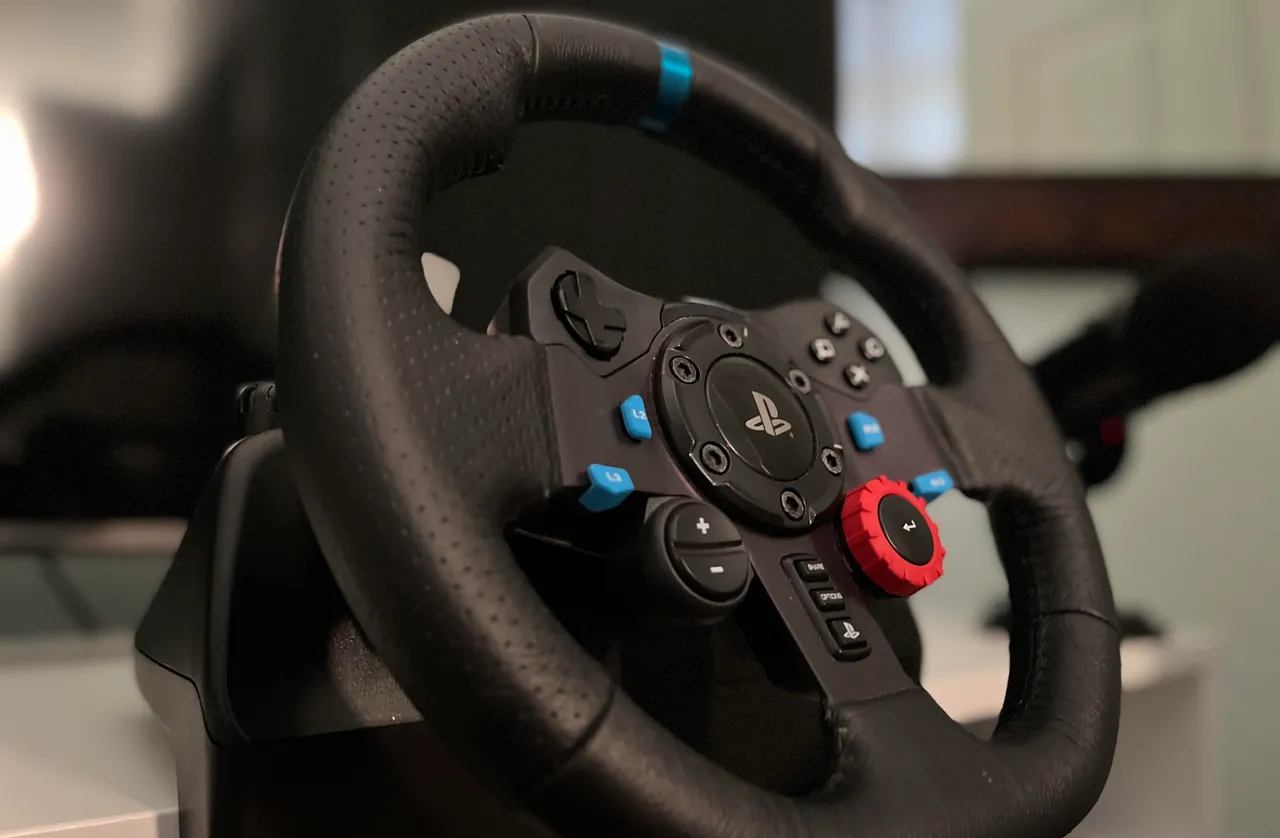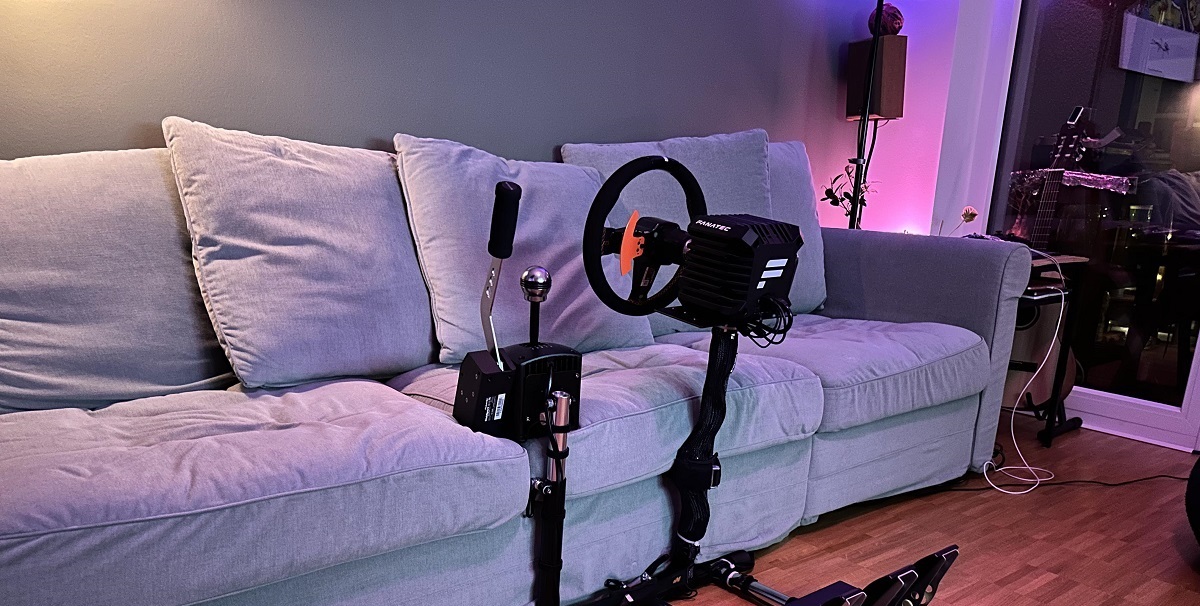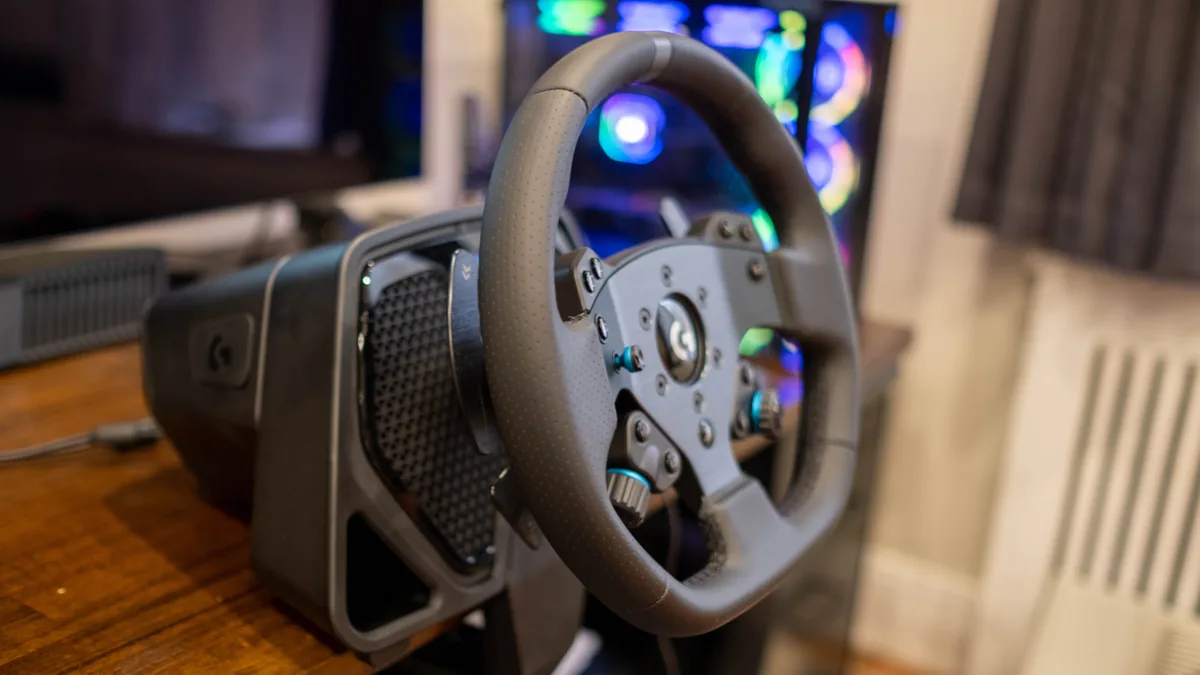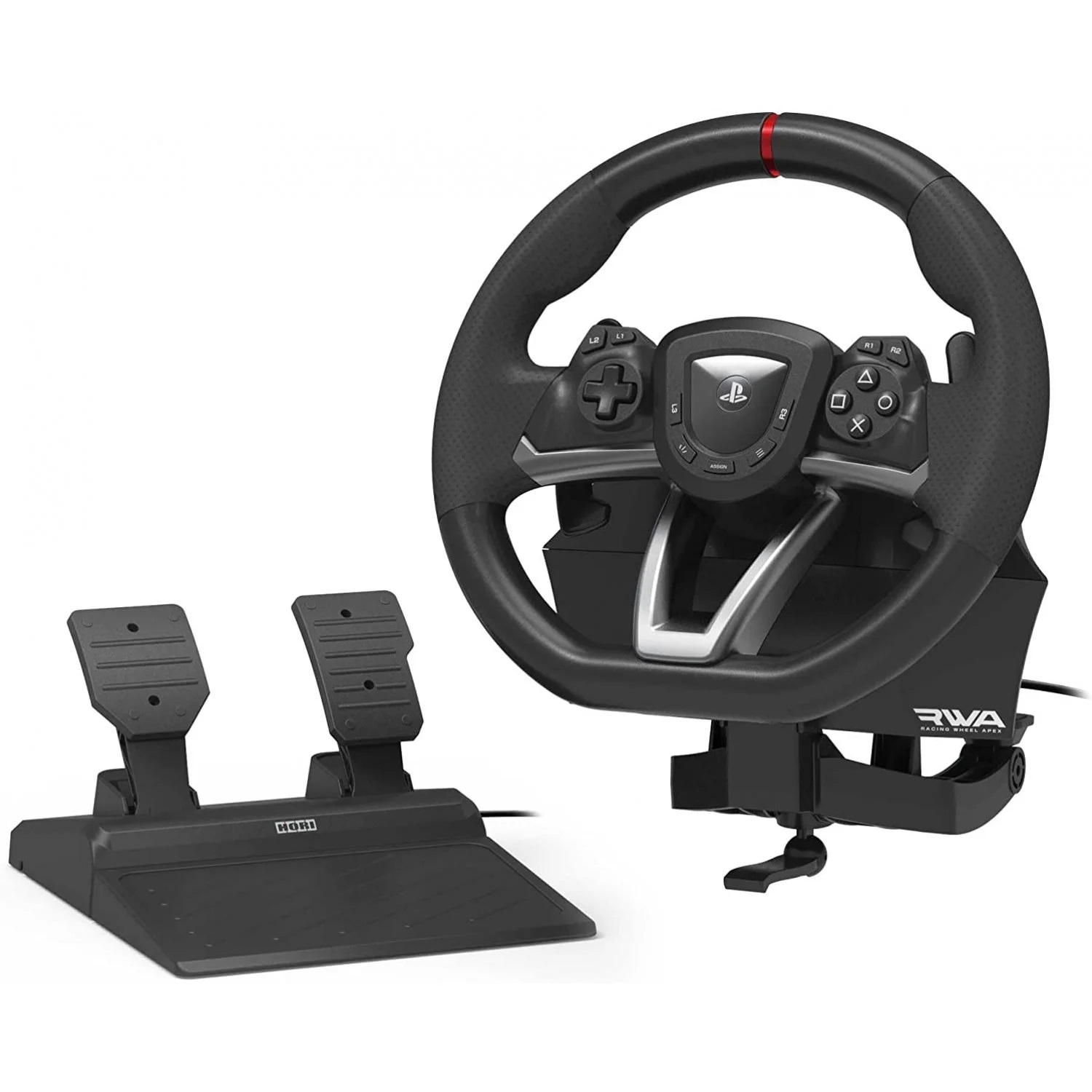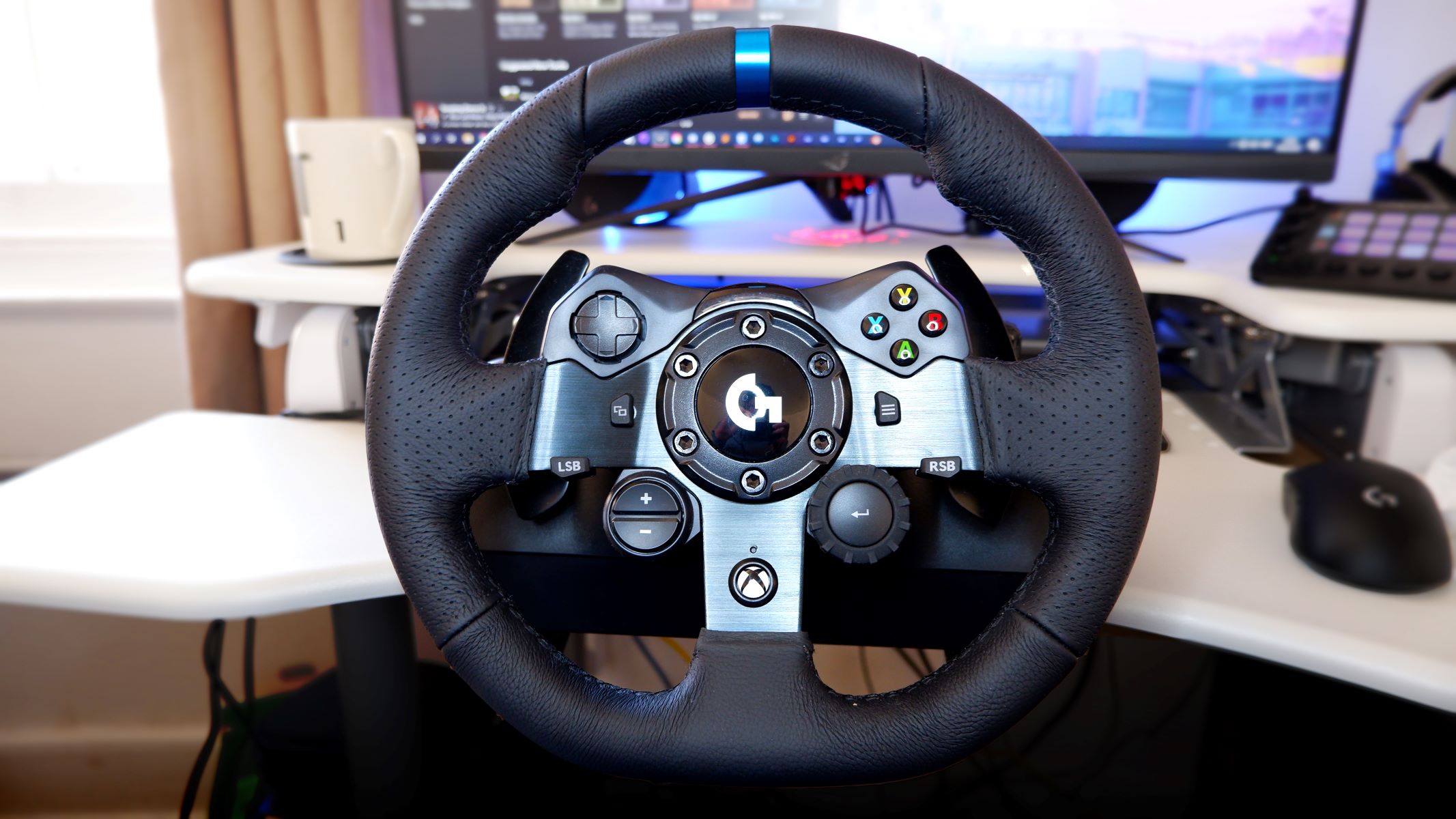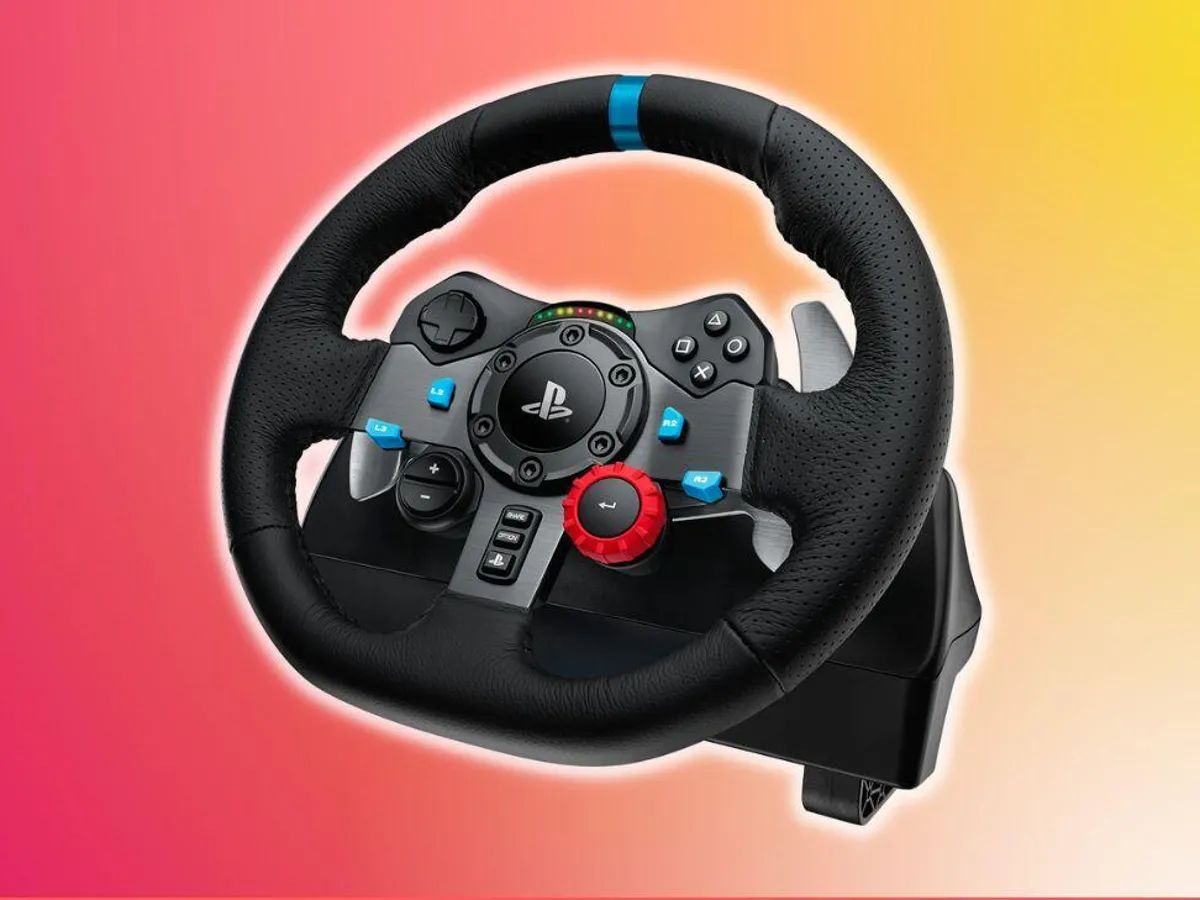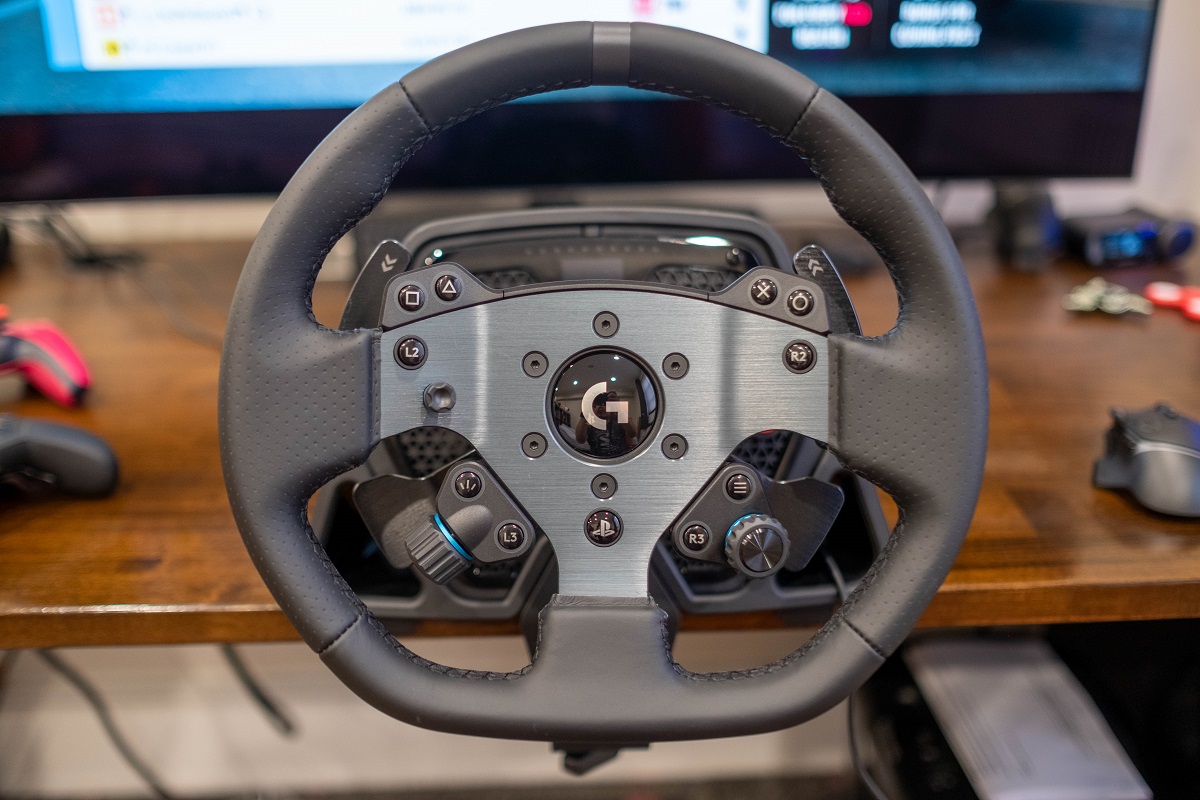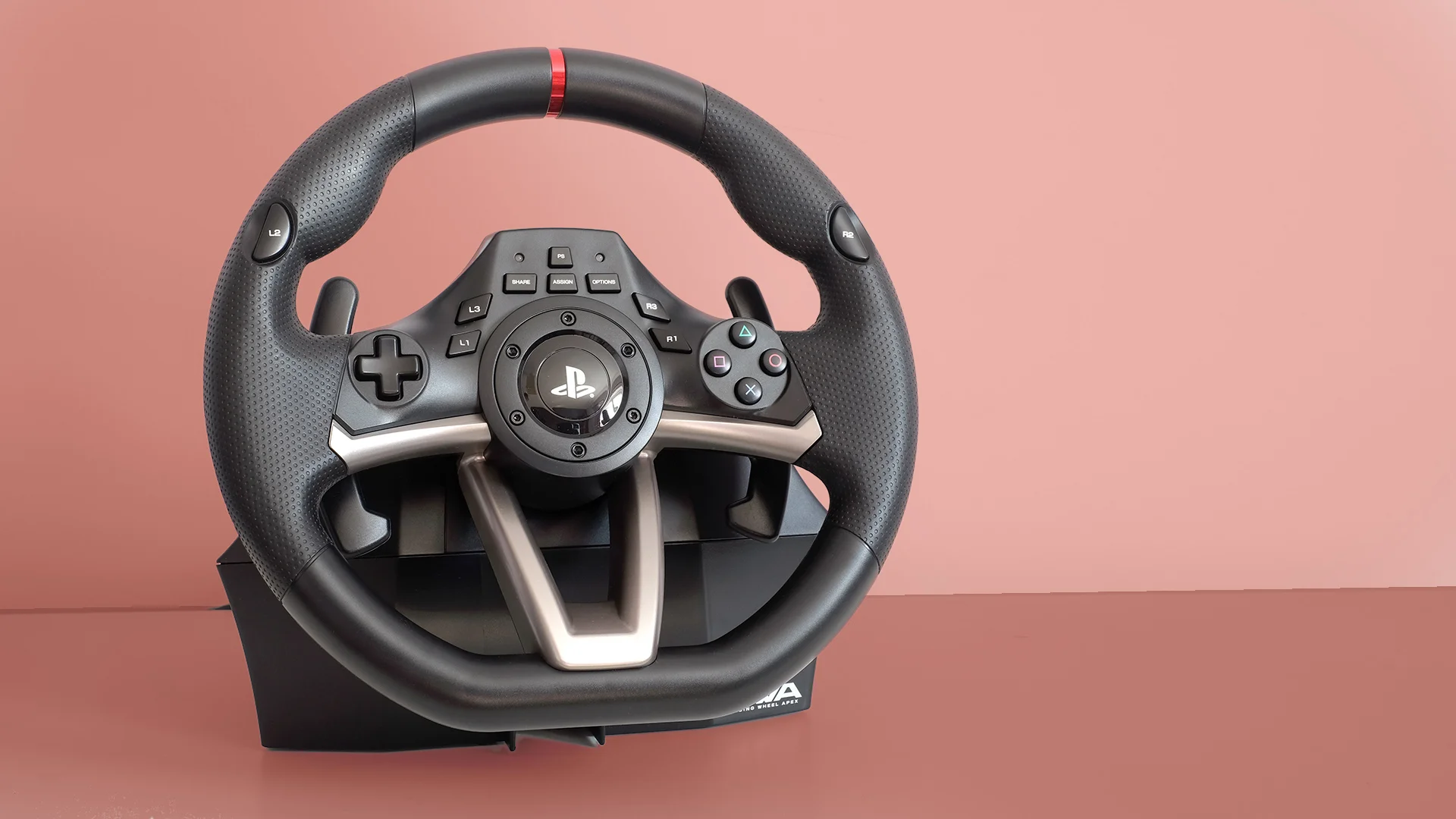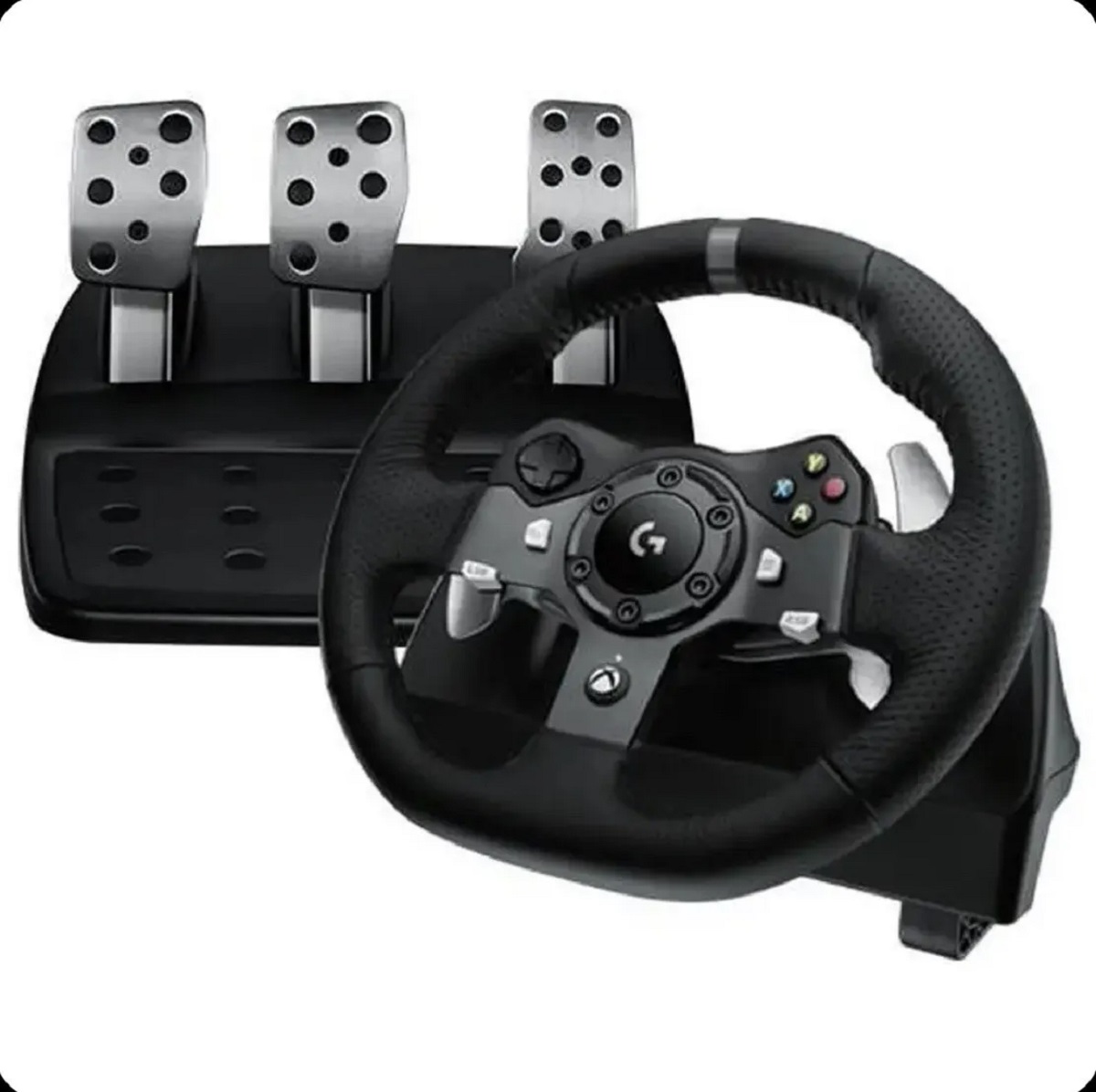Introduction
Are you ready to take your virtual racing experience to the next level? Using a racing wheel can provide an unparalleled sense of immersion and control, allowing you to feel every turn, bump, and acceleration as if you were behind the wheel of a real car. Whether you're a seasoned racing game enthusiast or a newcomer looking to enhance your gaming setup, incorporating a racing wheel can elevate your gameplay to new heights.
In this comprehensive guide, we'll explore the essential steps for using a racing wheel in any game. From selecting the right racing wheel for your needs to configuring the controls and mastering different game genres, you'll gain valuable insights to optimize your racing experience. By the end of this guide, you'll be well-equipped to harness the full potential of your racing wheel and enjoy an immersive, adrenaline-pumping gaming experience.
So, buckle up and get ready to dive into the exciting world of virtual racing with a wheel at your fingertips. Whether you're aiming for precision control in realistic simulators or seeking an edge in arcade-style racing games, the following sections will help you make the most of your racing wheel setup. Let's hit the virtual track and explore the thrilling possibilities that await!
Choosing the Right Racing Wheel
When it comes to selecting a racing wheel for your gaming setup, several factors should influence your decision. The market offers a wide array of options, each catering to different preferences and budgets. To make an informed choice, consider the following aspects:
- Compatibility: Ensure that the racing wheel is compatible with your gaming platform, whether it’s a PC, PlayStation, Xbox, or other consoles. Some wheels are designed for specific platforms, while others offer cross-platform compatibility.
- Force Feedback: Opt for a wheel with force feedback technology to experience realistic sensations, such as the resistance of the steering wheel when taking sharp turns or the impact of collisions.
- Wheel Size and Rotation: The diameter of the wheel and its rotation range contribute to the realism of the driving experience. Larger wheels with wider rotation angles can provide a more immersive feel.
- Pedals and Shifter: Consider whether the racing wheel includes pedals and a gear shifter. These accessories can enhance the overall experience and offer a more authentic driving feel.
- Budget: Determine your budget and explore wheels within that range. While high-end wheels offer advanced features, there are also budget-friendly options that deliver satisfying performance.
Researching and reading user reviews can provide valuable insights into the performance and durability of different racing wheels. Additionally, visiting gaming forums and seeking recommendations from experienced users can help you narrow down your choices and find a wheel that aligns with your preferences.
By carefully assessing the compatibility, features, and budget considerations, you can make an informed decision when choosing a racing wheel. Whether you opt for a premium, feature-rich model or a budget-friendly yet reliable option, selecting the right wheel sets the foundation for an exceptional virtual racing experience.
Setting Up Your Racing Wheel
Once you’ve chosen the perfect racing wheel for your gaming setup, it’s time to set it up for an immersive and seamless experience. Follow these essential steps to ensure that your racing wheel is properly configured and ready for action:
- Connection and Mounting: Begin by connecting the racing wheel to your gaming platform according to the manufacturer’s instructions. Whether it’s a USB connection for PC or a specific port for consoles, ensure a secure and stable connection. Additionally, if your wheel comes with a mounting clamp or stand, secure it to a stable surface at an appropriate height for comfortable usage.
- Software Installation: Some racing wheels require specific drivers or software for optimal functionality. Visit the manufacturer’s website to download and install the necessary software to unlock all the features and customization options for your wheel.
- Calibration: Before diving into your favorite racing game, calibrate the wheel to ensure accurate steering and pedal responses. Most wheels offer calibration tools either through dedicated software or in-game settings. Follow the calibration instructions to fine-tune the wheel’s sensitivity and dead zones.
- Adjusting Wheel Settings: Explore the available settings on your racing wheel, such as force feedback strength, rotation sensitivity, and pedal resistance. Customizing these settings can tailor the wheel’s response to your preferences and enhance the overall driving experience.
- Positioning and Ergonomics: Position the racing wheel and pedals in a way that promotes ergonomic comfort during extended gaming sessions. Adjust the wheel’s height and angle to align with your seating position, and ensure that the pedals are within easy reach and provide a natural driving posture.
By meticulously setting up your racing wheel and fine-tuning its settings, you can maximize its potential and enjoy a realistic and immersive driving experience in your favorite racing games. Taking the time to configure the wheel to your preferences ensures that every race feels engaging and responsive, allowing you to focus on the thrill of the competition without distractions.
Configuring the Controls
Configuring the controls of your racing wheel is a crucial step in optimizing your gaming experience. By customizing the button layout, force feedback settings, and sensitivity, you can tailor the controls to match your driving style and maximize your performance on the virtual track. Here are the key aspects to consider when configuring the controls of your racing wheel:
- Button Mapping: Most racing wheels feature a variety of buttons, dials, and paddles that can be mapped to different in-game functions, such as shifting gears, activating boost, or adjusting the virtual mirrors. Take the time to map these controls according to your preferences, ensuring quick access to essential functions during intense races.
- Force Feedback Settings: Experiment with the force feedback settings to find the right balance between realism and comfort. Adjust the strength of the force feedback to match the intensity of the driving experience you desire, whether it’s a gentle rumble on straightaways or a vigorous response during challenging maneuvers.
- Steering Sensitivity: Fine-tune the steering sensitivity to achieve precise control over your virtual vehicle. Balancing the steering input with the wheel’s rotation range can help you navigate tight corners with accuracy and maintain stability at high speeds.
- Pedal Calibration: Calibrate the pedals to ensure consistent and accurate input. Whether it’s adjusting the pedal resistance or fine-tuning the travel distance for optimal braking and acceleration, precise pedal calibration is essential for mastering the art of virtual driving.
- Custom Profiles: Some racing wheels offer the ability to create custom profiles for different games or driving styles. Take advantage of this feature to save and switch between tailored configurations, allowing you to adapt the controls seamlessly when transitioning between various racing titles.
By delving into the control settings of your racing wheel, you can unleash its full potential and craft a personalized driving experience that aligns with your preferences and skill level. Whether you prefer a nuanced and realistic driving feel or a more forgiving and arcade-style setup, configuring the controls empowers you to dominate the virtual racetrack with confidence and precision.
Practicing and Getting Comfortable
Once your racing wheel is set up and the controls are configured to your liking, it’s time to embark on a journey of practice and refinement. Getting comfortable with the racing wheel and honing your driving skills is essential for mastering the art of virtual racing. Here are some valuable tips to help you practice effectively and become proficient with your racing wheel:
- Start with Familiar Tracks: Begin your practice sessions on tracks that you are familiar with from previous gaming experiences. This familiarity will allow you to focus on adapting to the nuances of the racing wheel without the added challenge of learning new track layouts.
- Gradually Increase Difficulty: As you gain confidence and familiarity with the racing wheel, gradually increase the difficulty settings in your racing games. This progression will challenge you to refine your driving techniques and adapt to more demanding race conditions.
- Focus on Consistency: Strive for consistent lap times and smooth driving lines. Practice maintaining control of your virtual vehicle through corners and straightaways, aiming for precision and fluidity in your maneuvers.
- Experiment with Different Cars: Explore the diverse range of vehicles available in your racing games. Each car may require adjustments in your driving approach, allowing you to broaden your skills and adapt to varied handling characteristics.
- Seek Feedback and Analysis: Record your racing sessions or seek feedback from fellow gamers to gain insights into your driving performance. Analyzing your races can reveal areas for improvement and help you refine your techniques for optimal results.
As you dedicate time to practice and familiarize yourself with the racing wheel, you’ll notice a gradual improvement in your control, precision, and overall performance in virtual races. Embrace the learning process, celebrate your milestones, and remain open to refining your skills as you immerse yourself in the thrilling world of virtual racing.
Tips for Using a Racing Wheel in Different Game Genres
Adapting to the nuances of various game genres is essential for harnessing the full potential of your racing wheel. Whether you’re navigating realistic simulations or indulging in high-octane arcade experiences, the following tips will help you optimize your performance across different racing game genres:
- Simulators: In realistic racing simulations, such as Gran Turismo or Assetto Corsa, precision and finesse are paramount. Pay close attention to braking points, apexes, and throttle control, utilizing the racing wheel’s feedback to gauge traction and maintain stability through challenging corners.
- Arcade Racing: For fast-paced arcade-style games like Need for Speed or Burnout, embrace the wheel’s responsiveness to execute daring maneuvers and drifts. Experiment with aggressive steering inputs and quick reflexes to dominate the arcade racing experience.
- Rally and Off-Road: When tackling off-road and rally racing games, such as the Dirt series, anticipate unpredictable terrain and utilize the wheel’s force feedback to navigate undulating surfaces. Mastering the art of counter-steering and throttle modulation is crucial for conquering off-road challenges.
- Kart Racing: In lighthearted kart racing games like Mario Kart or Crash Team Racing, embrace the wheel’s nimble handling and focus on maintaining momentum through tight turns. Precision and strategic item usage can elevate your performance in these whimsical yet competitive racing experiences.
- Open-World Driving: When exploring expansive open-world driving games such as Forza Horizon or The Crew, immerse yourself in the freedom of exploration while adapting to varied road conditions and environments. Leverage the wheel’s feedback to feel the nuances of each terrain type and relish the sense of unrestricted driving.
By tailoring your approach to match the unique demands of each racing game genre, you can fully immerse yourself in diverse virtual racing experiences and extract maximum enjoyment from your racing wheel setup. Embrace the versatility of your racing wheel and adapt your driving techniques to conquer the distinct challenges presented by different game genres.
Conclusion
Congratulations on embarking on the exhilarating journey of integrating a racing wheel into your gaming repertoire. By following the comprehensive steps outlined in this guide, you’ve gained valuable insights into selecting the right racing wheel, setting it up for optimal performance, configuring the controls to match your preferences, and honing your skills across various game genres. As you embrace the immersive experience of virtual racing, remember that practice, adaptation, and a willingness to refine your techniques are key ingredients for unlocking the full potential of your racing wheel.
With your racing wheel as the conduit to a world of gripping races, realistic simulations, and adrenaline-fueled challenges, the possibilities for exhilarating gameplay are boundless. Whether you’re navigating hairpin turns in a high-stakes competition or embarking on leisurely cruises through open-world landscapes, the racing wheel empowers you to feel every twist and turn with unparalleled authenticity.
As you continue your virtual racing odyssey, don’t hesitate to explore new game titles, share experiences with fellow enthusiasts, and seek opportunities to further enhance your gaming setup. Embrace the thrill of the race, celebrate your victories, and relish the continuous evolution of your skills as you immerse yourself in the captivating world of virtual racing.
Remember, the journey to mastery is a dynamic and rewarding pursuit, and your racing wheel serves as the conduit to an ever-expanding realm of excitement and competition. Embrace the challenge, savor the thrill, and let your racing wheel propel you into unforgettable gaming experiences that ignite your passion for virtual racing.







